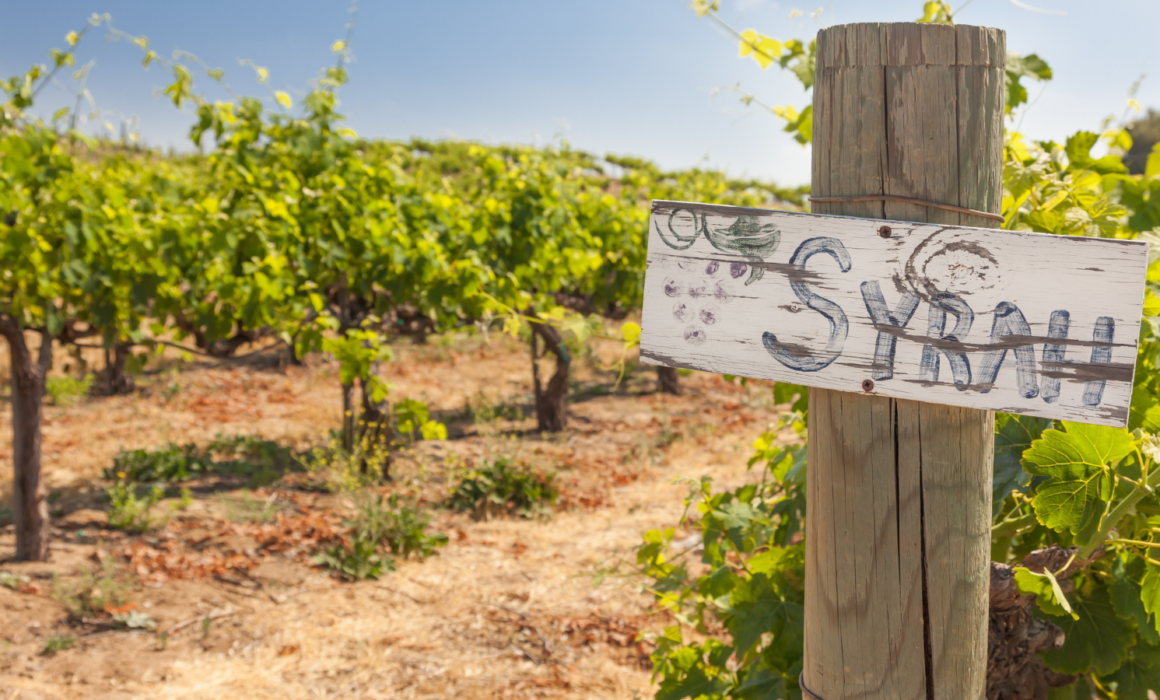Durell Syrah, A Rare and Historic Sonoma County Clone
By Virginie Boone
In the 1980s and 1990s, Durell Syrah was a highly rare and sought-after varietal clone, its origins linked to Ed Durell and Steve Hill, who planted it in the rocky volcanic soils of Durell Vineyard in Sonoma Valley.
Sonoma County California Farm Advisor Rhonda Smith wrote about the origins of Durell Syrah for a Foundation Plant Services newsletter in 2004. In it, she detailed how the Durell Clone was registered as Syrah FPS 08 in 2001, though it had already been a popular selection for grapegrowers and winemakers for decades.
The clone was ultimately traced back to a vine of Shiraz FPS 01 planted in the Foundation Plant Vineyard in 1973, which, as she acknowledged, “comes as no surprise to most growers who obtained budwood from the Durell Vineyard in the 1980s and beyond.”
Food broker Ed Durell bought part of the Felder Dairy Ranch straddling Sonoma Valley, Sonoma Coast and Carneros in 1977. Enticed by the attention nearby vineyard Les Pierres was getting, he soon asked his ranch manager Steve Hill to develop it into vineyards. Kenwood Winery asked Hill if he would plant Syrah for them as the grape variety was hard to find.
As Smith documents, Hill “field budded 6 acres of AXR#1 rootings planted in the Sonoma Valley AVA (American Viticultural Area) with budwood he obtained from Linda Vista Nursery in Napa. The paper trail of that purchase has long disappeared, as has the nursery itself; however, Steve (Hill)recalls that the owner, Bill Guiremand, told him that the source of his Syrah was ‘Shiraz 1’ from UC Davis.”
Smith adds that the first Shiraz selections at FPS were all from a single importation from Australia that arrived in 1970, with the wood likely from Best’s Vineyard at Great Western in Victoria. Shiraz FPS 01 was planted in the Foundation Vineyard in 1973 and Linda Vista Nursery bought cuttings of the registered Shiraz in 1977 and 1978.
Two decades later, UC Davis professor Dr. Carole Meredith verified that all Shiraz selections at FPS had the same DNA profile as French Syrah and that Shiraz and Syrah were the same.
In 2002, Syrah FPS 08 was registered as Durell Syrah with the understanding that Shiraz 01 and Syrah 08 are genetically identical.
Kenwood ultimately decided Durell Syrah didn’t fit into their wine program and so Durell Syrah grapes were sold to Kendall-Jackson (when it was still in Lake County under the direction of winemaker Jed Steele) and Edmunds St. John Winery, with Durell becoming a vineyard-designate for both wineries in the mid-1980s.
Winemaker Steve Edmunds’ memories of making his first Durell Vineyard Syrah in 1986 included the grapes’ wonderfully unique smell from the start of fermentation… “it had smoke, black pepper and exotic fruit aromas. It was screaming with energy. The wines had lovely depth, full tannins and great complexity. None of the other Syrah blocks had that special character.”
[Edmunds recently announced his retirement from winemaking; many of his 1980s and 1990s bottlings of Durell Syrah are valued today in the hundreds of dollars, rare collector items.]
Meanwhile, Kendall-Jackson Durell Vineyard Syrah made the first Wine Spectator Top 100 list in 1988 – at #23. It got 92 points and cost $14. Steele told Spectator decades later about the way he approached making the wine.
“I didn’t want to do an Aussie style,” Steele told Harvey Steiman in 2012. “I knew that Durell was a fairly cool site, so I figured something more akin to a Northern Rhône would be right. We didn’t have any Viognier at that time in Durell, so I actually added 8% barrel-fermented Durell Chardonnay, the only white grape they had, the idea being to try to imitate that style. Now it’s common practice, back then it might have been the first time it was done in California.”
Around this time, growers began to buy bud sticks from the 6-acre block of Durell Syrah.
Hill later sold bud sticks to Sonoma Grapevines Nursery in Santa Rosa, which also sold the wood and bench grafts as Durell Syrah through around 1993.
Eventually, the original 6-acre block started to decline, affected by Eutypa and phylloxera, and it was pulled out in 1999. Hill took budwood from the original planting to field bud a 1.5-acre block at Parmalee-Hill Vineyard next door, which he and his family owned, using grafts propagated by Sonoma Grapevines, some of the last plantings from the original Durell Syrah clones.
Steve Hill’s son, Ned, continues to farm Parmalee-Hill and other vineyard sites under the La Prenda Vineyard Management name, and produces a Parmalee-Hill Syrah.
Durell Syrah became popular in the 1980s and 1990s, not long after Gary Eberle first planted French cuttings of Syrah in the Estrella District of Paso Robles, creating the Estrella clone, which a good majority of Syrah in America is planted to.
Kendall-Jackson bought 70 vineyard acres of Durell in 1994, including the original 6-acre block of Syrah. In 1996 Durell sold the remaining 115 vineyard acres to Bill Price (Three Sticks) and Ellie Price (Dunstan Wines).
Today, Dunstan makes a Durell Vineyard Syrah from the River Block at Durell, which is otherwise planted primarily to Pinot Noir and Chardonnay across its 134.5 of planted acres. Three Sticks makes the Casteñada Red Blend from Durell Vineyard, from a field blend of about 60% Syrah, 10% Grenache and 30% Marsanne/Grenache Blanc/Viognier.
Ram’s Gate also makes a Durell Vineyard Syrah, and uses Durell Syrah in its Cellar Note Grenache.


